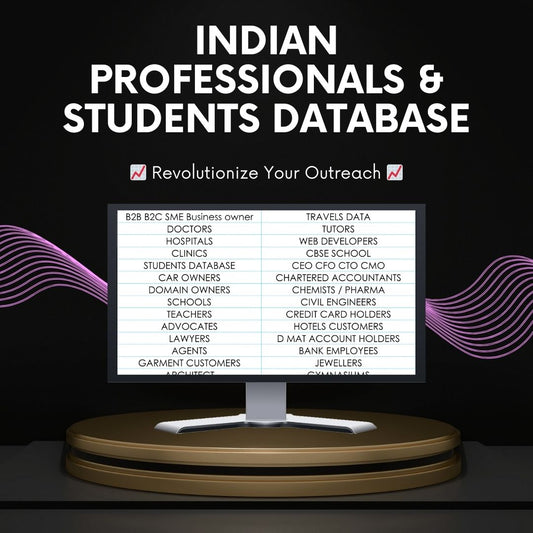Edit Viral Tech Reels on Your Phone - A Comprehensive Guide
Share
In today's digital age, short-form videos have taken the internet by storm. Platforms like Instagram, TikTok, and YouTube Shorts are filled with dynamic, engaging content that captures the audience's attention in mere seconds. This trend presents an exciting opportunity for creators, marketers, and anyone looking to share their message.
This blog will guide you through the process of editing viral tech reels on your phone, using accessible tools and techniques that can elevate your video content.
The Importance of Video Editing
Video editing is the backbone of successful short videos. The ability to grab attention quickly and maintain viewer engagement is crucial. Editing can transform raw footage into a polished final product that resonates with viewers. The right editing techniques can lead to millions of views, making your content stand out in a saturated market.
Regardless of the topic, effective editing is what truly matters. This guide will focus on using your phone for editing, specifically utilizing apps like CapCut or VN. These tools offer comprehensive features that allow you to create professional-quality videos without the need for expensive software or equipment.
Getting Started with Video Editing
Before diving into editing, ensure you have a video ready to work with. This could be any footage related to your chosen topic. For instance, if you’re creating a tech review, gather your clips, and let’s get started.
Step 1: Importing Your Video
Open your chosen editing app, such as VN. Begin by importing your video clip. This is the foundation for your editing process, so choose a clip that has strong content to work with.
Step 2: Trimming and Cutting
The next step is to make cuts in your video. Identify any unnecessary parts and trim them away. Focus on maintaining a fast-paced flow to keep your audience engaged. For instance, if your video starts with a long introduction, consider cutting it down to get to the main content quickly.
Step 3: Adding Dynamic Zooms
To enhance viewer engagement, incorporate zooms in your video. By zooming in on specific frames, you can create visual interest and emphasize important points. Alternate between zooming in and out to maintain a dynamic feel throughout the video.
Incorporating B-Rolls and Visual Assets
Adding B-rolls—supplementary footage that enhances your main content—is essential for storytelling. These clips can provide context, illustrate points, and keep the video visually appealing. You can also use free stock footage or images to complement your narrative.
Finding Free Assets
There are numerous resources online where you can find free assets, including sound effects, graphics, and transitions. For example, websites like Pexels and Unsplash offer high-quality images and videos that can be used freely. Make sure to explore these options to enrich your video.
Step 4: Adding Stickers and Text
Creativity is key in video editing. Adding stickers or text overlays can help communicate your message more effectively. Choose eye-catching fonts and colors that align with your video's theme. For instance, if your video is about tech gadgets, consider using sleek, modern text styles.
Sound Design and Music
Sound design is a critical component of video editing. The right sound effects can elevate your video and enhance the viewing experience. Incorporate background music that fits the tone of your video and adds energy to the content.
Choosing the Right Sound Effects
When adding sound effects, ensure they match the actions in your video. For example, if you're transitioning between clips, a swoosh sound effect can enhance that moment. Many editing apps come with built-in sound libraries, but you can also find free sound effects on platforms like Freesound.org.
Step 5: Implementing Transitions
Transitions are essential for creating smooth visual flow from one clip to another. Use different types of transitions to avoid monotony. For instance, you can use zoom, blur, or shake transitions, depending on the context of your video. Ensure each transition feels natural and complements the narrative.
Color Grading and Final Touches
Color grading is the process of adjusting the colors in your video to achieve a specific mood or aesthetic. This step can significantly enhance the visual appeal of your content. Utilize color filters available in your editing app or manually adjust brightness, contrast, and saturation to achieve the desired effect.
Step 6: Exporting Your Video
Once you're satisfied with your edits, it's time to export your video. Choose the appropriate resolution—1080p is recommended for most platforms. Ensure the frame rate is set to 30fps, which is standard for smooth playback. Pay attention to the bitrate as well, as this will affect the quality and file size of your video.
Sharing Your Content
After exporting, it’s time to share your masterpiece with the world. Consider the best platforms for your content—Instagram Reels, TikTok, or YouTube Shorts. Each platform has unique features and demographics, so tailor your videos accordingly.
Engaging with Your Audience
Once your video is live, engage with your audience. Respond to comments, ask for feedback, and encourage viewers to share your content. Building a community around your videos can lead to increased visibility and growth.
Conclusion
Editing viral tech reels on your phone is not only accessible but also a fun and creative process. By following these steps—trimming, adding dynamic elements, incorporating sound, and perfecting your visuals—you can create engaging content that captures viewers' attention. Remember, practice makes perfect, so continue experimenting with different techniques and styles. Happy editing!
For additional resources, including free sound effects and editing assets, check out the links provided in the description. These tools can significantly enhance your editing experience and help you create professional-quality videos.



